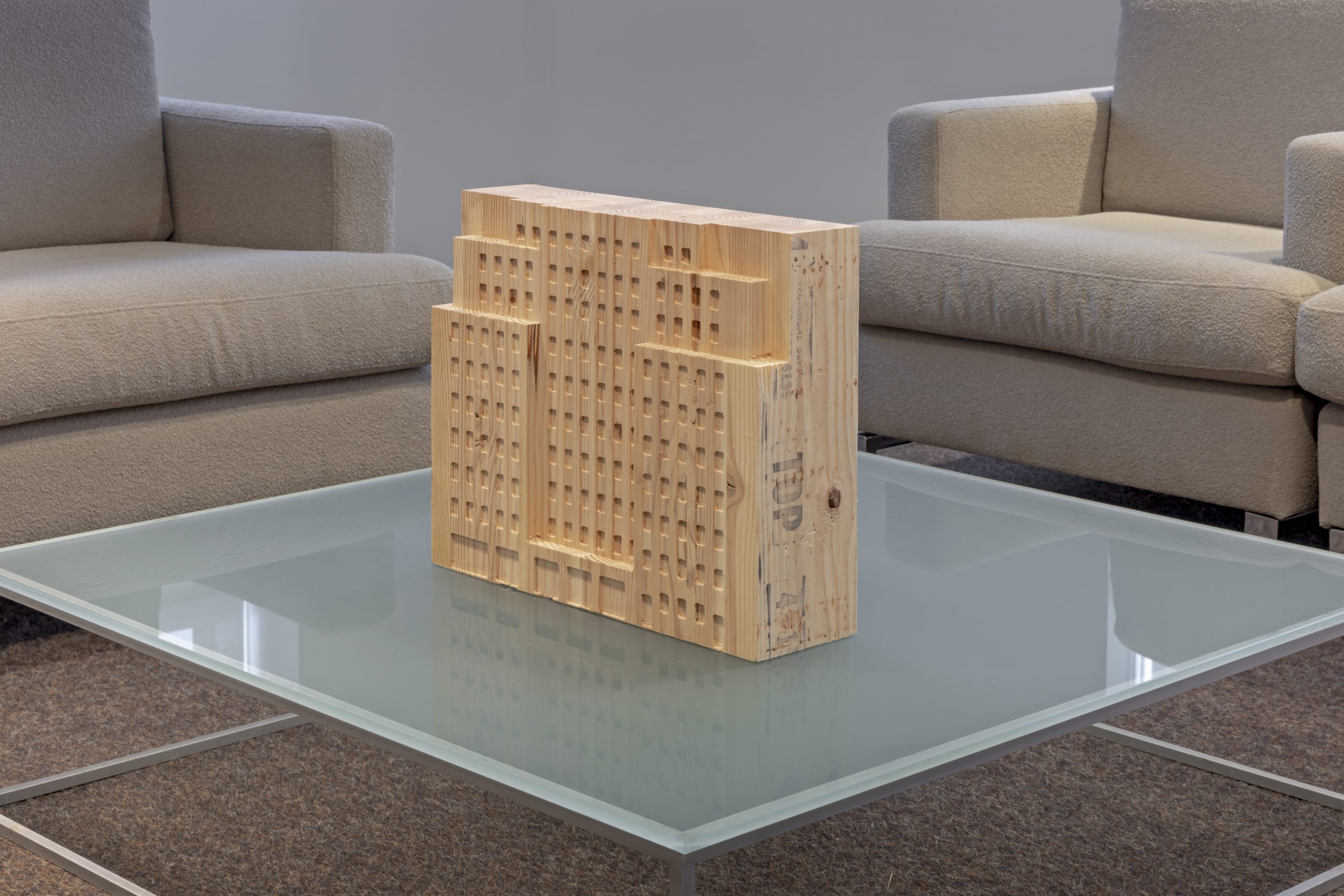Description: On September 18th, 2019, the Art exhibition “Weather Amnesia” opened at the University of Toronto, presented in conjunction with the Jackman Humanities Institute’s 2019-2020 research theme “Strange Weather”. Alongside with artworks from the artists and University’s permanent collection, it also features a CNC (i.e., computer numerical control)-cut Mass Timber that models the design of the facade of the Jackman Humanities Institute building at 170 St. George St.
As an all-wood mass timber product, Dowel Laminated Timber (DLT) does not contain any glue (aside from a minute amount of glue used for finger jointing), chemicals, VOCs (Volatile organic compounds), or metal nails. The exclusion of glue and nails allows a healthier indoor air quality as there is no off-gassing. This timber sample is shipped from sustainably managed forests, locks in carbon dioxide, acts as a carbon sink, and participates the exhibition as one of representative solutions to environmentally sustainable development in response to the global climate crisis: With strangeness becoming the new normal, it makes us wonder and think about what kind of future awaits us.
Why did you conduct this research? As a curator working on this exhibition layout, I was looking for practical examples that could create a dynamic conversation between art and science. Through the lens of artists’ works and artefacts of two mass timber examples, a live bird Migration Map, and a hygrothermograph, the exhibition was able to explore our changing environmental conditions, and observe both, the effects of environmental degradation and the potential for collective response.
Technique: Computer rendering app: RhinoCAM. Produce: CNC (i.e., computer numerical control) cut.
Acknowledgements: I gratefully acknowledge the operating support from the Art Museum at the University of Toronto, Canada Council for the Arts and the Ontario Arts Council, with additional project support from the Jackman Humanities Institute, Mass Timber Institute, Structure Fusion Inc., and Fiona Lu.

